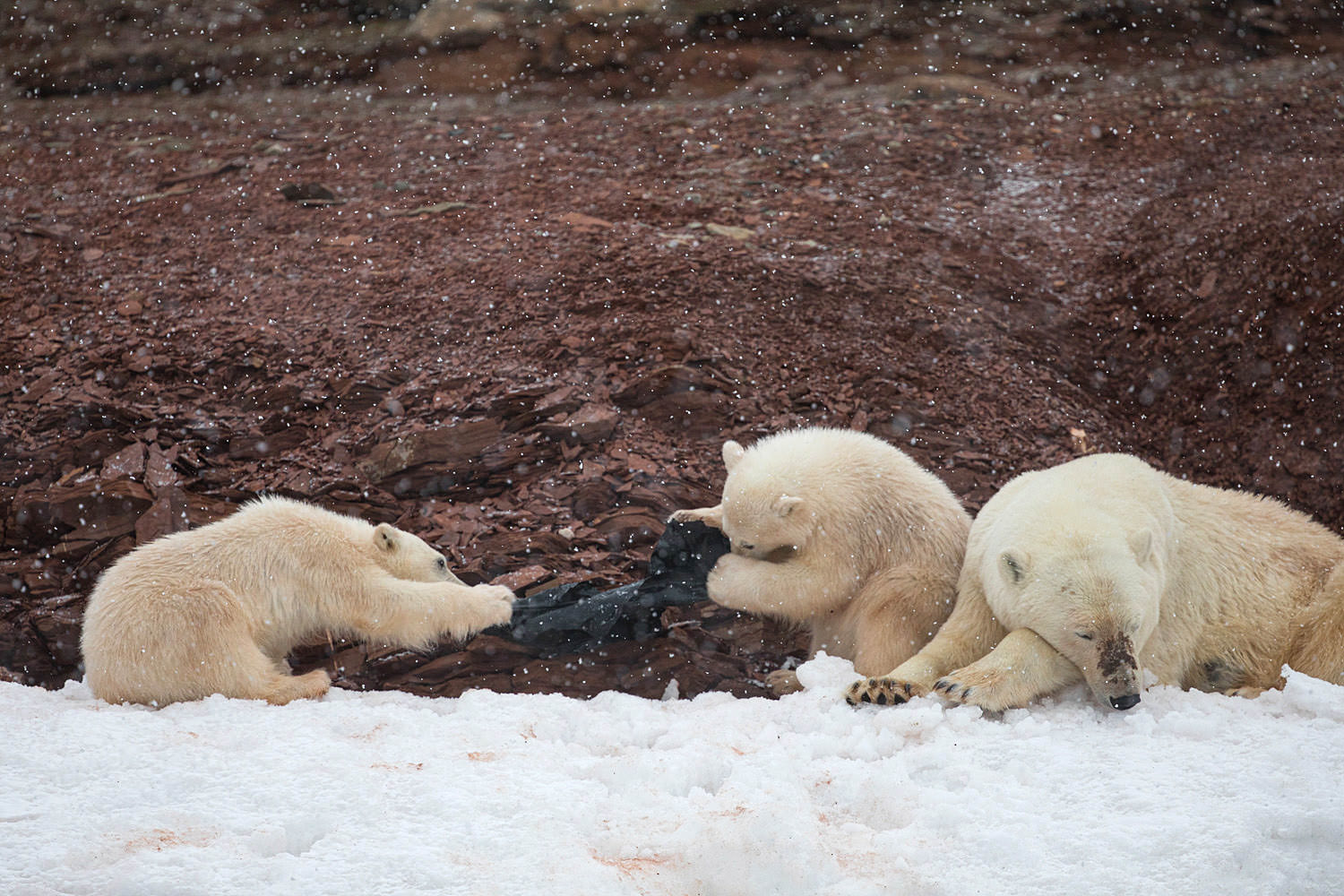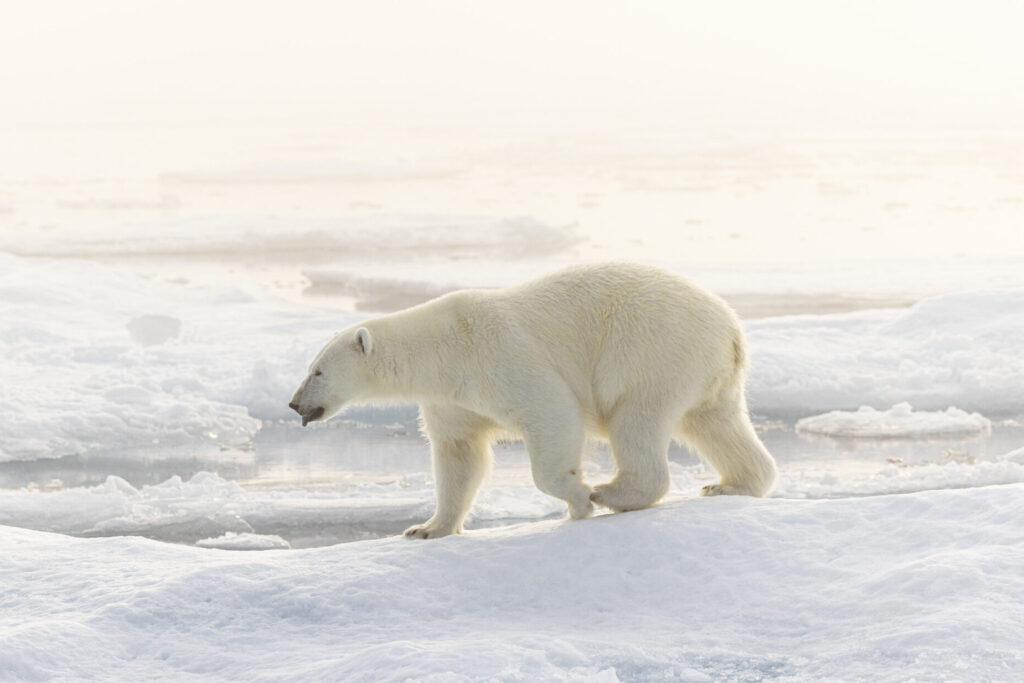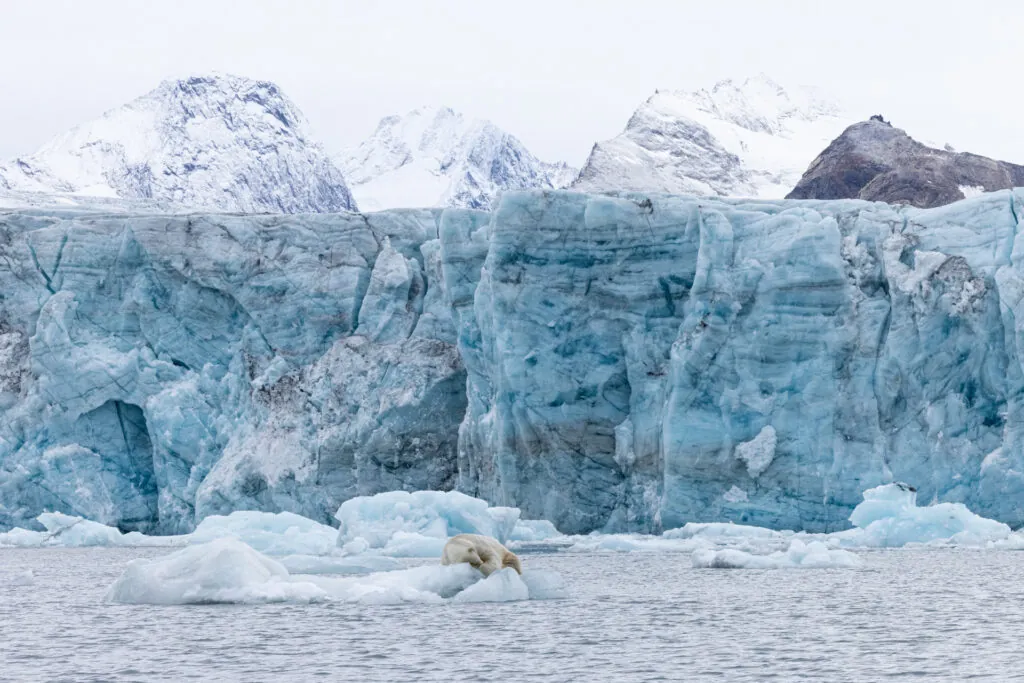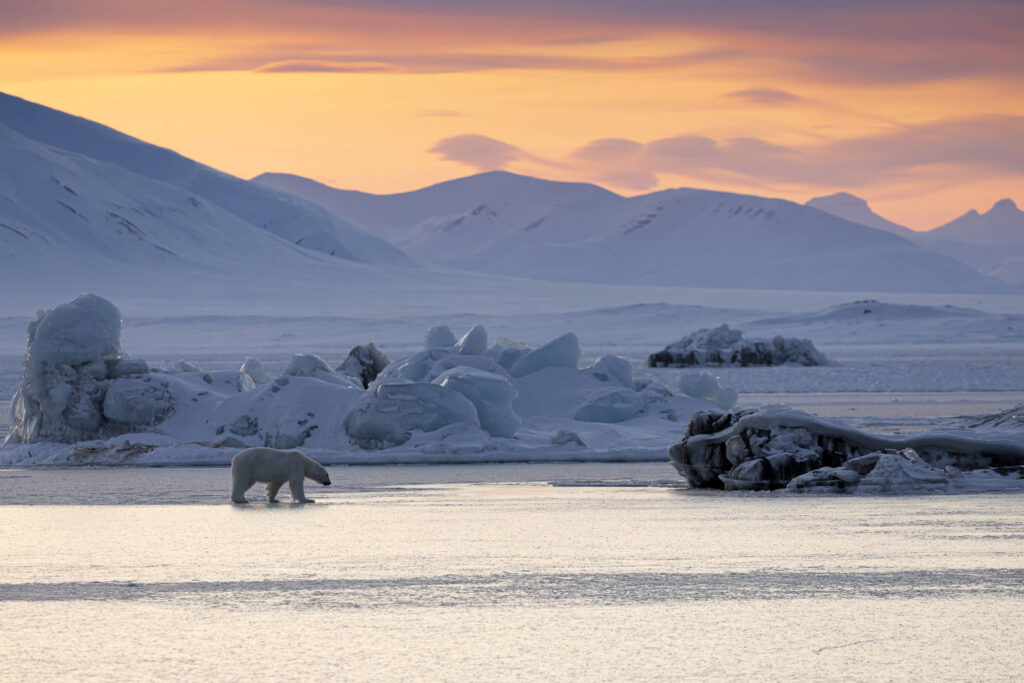Svalbard polar bears
Svalbard polar bears and plastic garbage
During our expeditions on Svalbard we have seen Svalbard Polar Bears eating plastic several times. Where they have been playing with plastic and being affected by garbage. Even on Svalbard, which is an outpost in the High Arctic, Polar Bears can not escape human stupidity. During our expeditions we pick garbage us much as we can and report bigger garbage like fishing nets. Later the garbage will be picked up by bigger vessels from the authorities.
We also observe Svalbard polar bears over time to learn about them and understand them better. Our approach is to let the polar bears decide if they want to stay nearby or just disappear. They have the choice to do so. This way we also observe a lot of their behavior over time. Several times this has confirmed that if they find plastic they often try to chew on it.

Svalbard polar bears and their biggest threats
Many think it is global warming that is the major threat to polar bears. That is not the only danger to them. Not only Svalbard polar bears is affected by this. Recent reports and sightings from other places in the High Arctic like Alaska and Russia, show that Polar Bears chew on and eat plastic if they find it. In an analysis of the stomach contents of 51 polar bears that had been killed by subsistence hunters in the southern Beaufort Sea between 1996 and 2018. Researchers led by Raphaela Stimmelmayr, a wildlife veterinarian with Alaska’s North Slope Borough Department of Wildlife Management, found that 25 percent of the bears had plastic in their stomachs.

Curious behavior
In the Arctic, dumps and nearby settlements are chock-full of plastic and a new survey from Alaska shows that polar bears are ingesting a lot of it. Our sightings in Svalbard, on several occasions, we clearly saw that polar bear cubs eat plastic. The plastic obviously trigger their curiosity. What would be better to do than examine a piece of black plastic when you are relaxing together with your mom? Nothing else to do during the down time far north in the high Arctic where not much else interesting happens? In our opinion polar bears, especially cubs and young inexperienced bears, eat plastic because they are curious. It's not by accident.
Ingesting plastic can cause serious problems for polar bears because of their physiology. Polar bears have a very narrow outlet from the stomach to the small intestine and large items can cause painful blockages. Two of the bears whose stomachs were stuffed with more plastics than the other bears had behaved differently and more irritable and aggressive. These two bears did not respond to deterrents meant to chase them away. Svalbard is known to be a place where plastic garbage is transported by the ocean currencies and pile up there. These amounts of plastic is a real threat to Svalbard polar bears.

Svalbard polar bears and their future
On Svalbard plastic garbage, fishing nets, fishing equipment, ropes and different plastic items is common to see. On every beach or island, we find especially small plastic pieces and other garbage items. Too often we also find bigger items. We always try to collect the plastic we find and pick it up. For bigger items, like fishing nets which are too heavy to remove by hand, we report it to the local authorities, and they will remove it. Hopefully Svalbard polar bears will survive all this garbage. It's tragic to see them eat peaces of plastic!
Upcoming Svalbard tours

Into the drift ice

Into the pack ice

Late August wildlife expedition

Late Autumn expedition

Svalbard extreme late Autumn Expedition

Svalbard winter landscapes

Pack Ice expedition Svalbard
